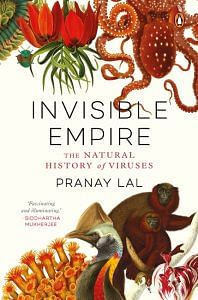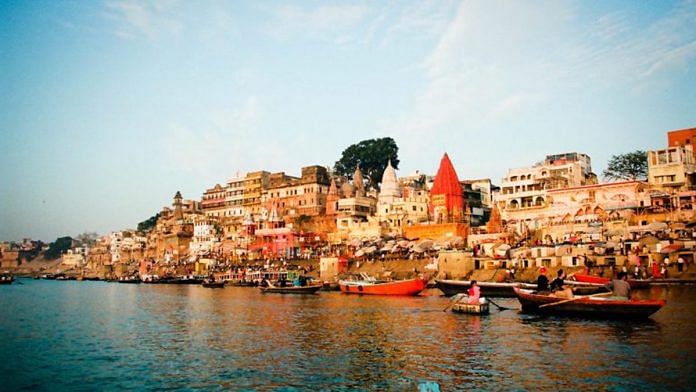India, of course, was the jewel in Britain’s proverbial colonial crown and among the scientists sent out to India was Ernest Hankin, who arrived at the port of Bombay in 1891. Hankin was a bacteriologist by training who had matriculated from St John’s College, Cambridge, in 1886, and had interned in the labs of eminent scientists like Frank Wesbrook in London, Robert Koch in Berlin and Louis Pasteur in Paris, before taking up his assignment in India. Hankin was appointed chemical examiner, government analyst and bacteriologist for the United Provinces, Punjab and the Central Provinces, and posted in Agra. His main task was to protect British troops from infectious diseases, especially the dreaded cholera. Cholera is caused by a sausage-shaped bacterium transmitted to humans through contaminated water or food and triggers violent diarrhoea characterised by ‘rice-water stools’. If left untreated, cholera can be lethal. Much of Hankin’s work entailed collecting water samples all year round so that he could monitor outbreaks of cholera in towns and villages. He was a keen swimmer and a skilled boatman and enjoyed taking boat rides along the Jamuna and Ganga when he went out on these inspections.
In February 1894, Hankin was on one such quest. He was on the lookout for the first signs of a cholera outbreak at the Maagh Mela in Allahabad, a fortnight-long Hindu festival that attracted over 3 million pilgrims every day. During the festival, devotees took a holy dip at the confluence of the mighty Ganga and Jamuna rivers, and remained on the riverbanks for days. Hankin collected and analysed water samples and what he found confirmed a pattern that he had noticed since he first began inspections of these rivers—there was very little bacterial contamination in their waters despite the multitudes of people and their cattle bathing in them, discarding their waste and burning corpses along their banks. In an 1895 paper, Hankin wrote that the Ganga and Jamuna were cleaner than most British or European rivers despite the way they were treated. Hankin knew about the Great Stink of London (1858) and Paris (1880) from his student days and wondered how and why these Indian rivers were able to avoid that kind of decay.
Local hakims and priests, of course, ascribed this to the mythical powers of the holy rivers but Hankin thought there might be a more scientific explanation. Was it possible that these waters possessed some kind of antibacterial properties? In the March 1895 issue of the Indian Medical Gazette, Hankin wrote about his ‘Observations on Cholera in India’, saying that he had sampled and tabulated each pond, well and water carrier along the two rivers—those that had the cholera bacterium and those that did not—and had found a ‘protective substance’ in the waters that did not contain the cholera bacterium. This substance could pass through a filter and its bacteria-killing property was destroyed when it was heated. He concluded that the filth and dirt thrown into the river were mostly consumed by turtles and vultures (‘efficient undertakers’, in his words), but that the remainder of the organic decay caused by rotting bacteria was quickly cleared by this unidentified ‘anti-bacterial’ material. He wrote about the antibacterial substance in the rivers in the Annals of the Pasteur Institute in 1896.
Also Read: Five reasons that are stopping Ganga from becoming clean
News of Hankin’s observations reached Mark Twain, the famous American author of The Adventures of Tom Sawyer, who was on a tour of Europe and India with his family. When Twain reached Agra between 27 and 29 February 1896, he made it a point to seek out Hankin. ‘A word further concerning the nasty but all-purifying Ganges water,’ Mark Twain wrote after their meeting.
When we went to Agra, by and by, we happened there just in time to be in at the birth of a marvel—a memorable scientific discovery—the discovery that in certain ways the foul and derided Ganges water is the most puissant purifier in the world! This curious fact, as I have said, had just been added to the treasury of modern science. It had long been noted as a strange thing that while Benares is often afflicted with the cholera she does not spread it beyond her borders. This could not be accounted for. Mr. Hankin, the scientist in the employ of the Government at Agra concluded to examine the water. He went to Benares and made his tests. He got water at the mouths of the sewers where they empty into the river at the bathing ghats; a cubic centimetre of it contained millions of cholera germs; at the end of six hours they were all dead. He caught a floating corpse, towed it to the shore, and from beside it he dipped up water that was swarming with cholera germs; at the end of six hours they were all dead. He added swarm after swarm of cholera germs to this water; within the six hours they always died, to the last sample. Repeatedly he took pure well water which was barren of animal life, and put into it a few cholera germs; they always began to propagate at once, and always within six hours they swarmed—and were numberable by millions upon millions.
For ages and ages the Hindoos have had absolute faith that the water of the Ganges was utterly pure, could not be defiled by any contact whatsoever, and infallibly made pure and clean whatsoever thing touched it. They still believe it, and that is why they bathe in it and drink it, caring nothing for its seeming filthiness and the floating corpses. The Hindoos have been laughed at, these many generations, but the laughter will need to modify itself a little from now on. How did they find out the water’s secret in those ancient ages? Had they germ-scientists then? We do not know.
Also Read: Why 43% of British still think colonial empire was a good thing, and a source of pride
Hankin’s findings on the antibacterial properties of the Ganga’s waters were published in reputed journals, but despite such unimpeachable endorsements, his work remained largely unnoticed. It didn’t help that Hankin also suffered from self-doubt. He saw several limitations in his methods and could not quite conclusively explain what caused the waning of the cholera bacteria in some wells but not in others. Hankin, therefore, may have been the first to observe the phenomena of viruses that kill bacteria but his name remains little known outside a small circle of virologists, and during his tenure in India, his best advice to stave off cholera in British cantonments and colonies continued to be to use antiseptic potassium permanganate. He advocated adding this purple chemical to wells and instructed army cantonment officers and new officers to India to eat ‘purple salad’ to avoid diarrhoea.
Over the next fifteen years, although the phenomenon of bacterial destruction by unidentified agents was observed by other scientists in Europe, no one pursued it doggedly to its logical end. Then, in 1912, Frederick W. Twort, a biologist who was attempting to grow the smallpox virus using calf’s lymph, noticed that something induced a watery dissolution of the bacterial colonies where he was culturing the lymph extract. He observed a ‘glassy transformation’ in the Petri dishes that had bacteria growing on them. When he separated these circular glassy discs and attempted to grow the bacteria again, he failed. He concluded that these bacterial cells had been destroyed by a ‘filterable agent’ which he believed were viruses.
 This excerpt from ‘Invisible Empire: The Natural History of Viruses’ by Pranay Lal has been published with permission from Penguin India.
This excerpt from ‘Invisible Empire: The Natural History of Viruses’ by Pranay Lal has been published with permission from Penguin India.



